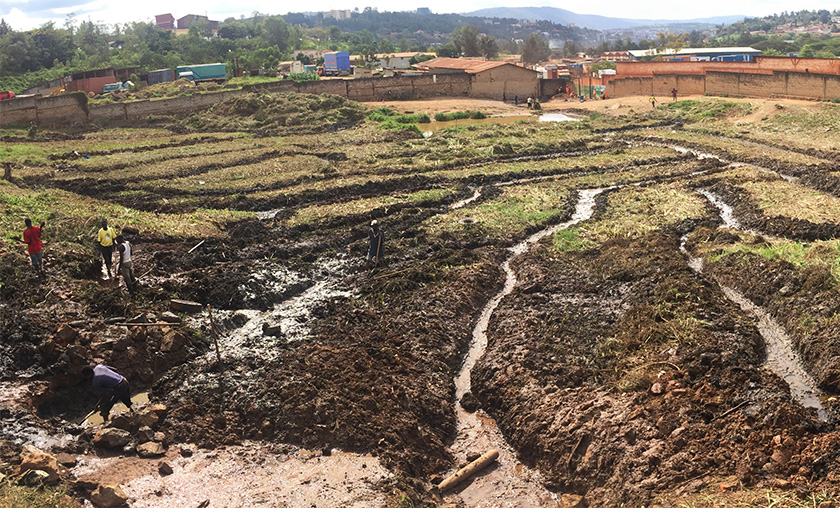The Gikondo and Nyabugogo wetlands are a system of swamps with a high environmental importance, since they provide water for the rivers downstream during the dry seasons; These wetlands are also important on a social and economical level, because they sustain agricultural activity, livestock production and also provide water for domestic uses, although they are being used above their regenerative capacity, in some cases.
This assignment’s objective was the making of detailed management plans for the restauration and development of a 500 ha area, covering the entire Gikondo wetland and part of the Nyabugogo wetland. This area is severely degraded (soil, vegetation and water) and the growing human population has been contributing to the aggravation of the cycle of recurring floods that damage infrastructures and promote further soil erosion and deforestation.
The Gikondo wetland is further at risk, because of the presence of an industrial area built in the ’70s, where a number of industries discharge toxic effluents, that threaten the environment and human health. The communities living just downstream of this area are of particular concern.
In this scope, the project involved the following tasks:
- Social assessment of the wetlands to understand and map land uses and human needs of the communities;
- Analysis of the restauration and development options, including a cost-benefit analysis, and considering the current needs from both the population and the industries;
- Restauration and development projects to restore the ecological functions of the Gikondo and Nyabugogo wetlands complex.

